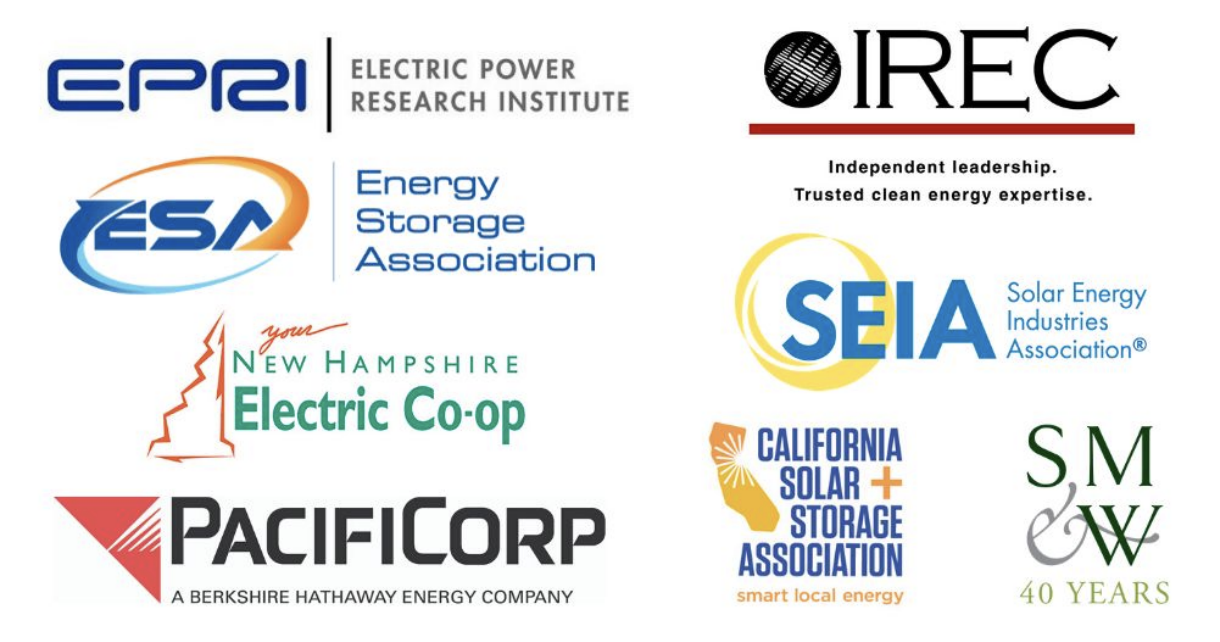Energy storage technologies have a crucial role to play in enabling the transition to a low-carbon economy. Despite significant growth of the energy storage market in recent years, the process of connecting this technology to the electricity grid remains complex and unclear in many states across the U.S. A new project, supported by a cooperative agreement with the U.S. Department of Energy Solar Energy Technologies Office, aims to simplify the interconnection process for energy storage.
The project team, led by the Interstate Renewable Energy Council (IREC), will identify and develop solutions to regulatory and technical barriers in the interconnection process of standalone energy storage and solar-plus-storage projects. From there, the team will create a nationally applicable toolkit of solutions that apply to diverse states and markets. Extensive training and educational outreach will drive adoption of the resulting solutions in a majority of states. Ultimately, the project aims to reduce the costs and time to process interconnection applications and interconnect energy storage and solar-plus-storage systems safely to the distribution grid.
In addition to IREC, the project team includes the Electric Power Research Institute (EPRI), the Solar Energy Industries Association (SEIA), the Energy Storage Association (ESA), the California Solar & Storage Association (CALSSA), utilities New Hampshire Electric Cooperative Inc. (NHEC) and PacifiCorp, and law firm Shute, Mihaly & Weinberger, LLP (SMW).
“In many states, if you propose a system with solar-plus-storage, the rules about how to interconnect to the grid are not at all clear,” explained Larry Sherwood, IREC President and CEO. “That creates a lot of uncertainty for developers, which increases costs and may scare them away from certain markets.
As a result, the full benefits of storage are not realized. Establishing best practices for the interconnection of storage to the grid is critical to sustaining market growth and enabling significant clean energy deployment.”
“Standalone energy storage and solar-plus-storage systems provide significant potential for increased grid reliability and resilience,” said Arshad Mansoor, President of EPRI. “We look forward to applying our technical expertise to help address grid interconnection challenges.”
“If we're able to more efficiently connect energy storage to the grid, costs will plummet, making solar-plus-storage systems more affordable and accessible to families and businesses,” said Justin
Baca, SEIA Vice President of Markets & Research. "This project will help us speed interconnection times and make it easier to connect solar-plus-storage systems of all sizes to the grid. By 2023, nearly one in four distributed generation solar systems could be paired with energy storage."
"Contractors and utilities all know there is a lot of growing up to do on the interconnection process for energy storage," said Brad Heavner, CALSSA Policy Director. "We are excited to collaborate with this team to work through these complex issues and develop and share clear recommendations."
“Developing the tools that stakeholders can use to reduce the time spent and cost incurred connecting storage projects to the grid will accelerate the safe and affordable deployment of energy storage and storage plus solar projects,” noted Marc Chupka, Vice President for Research and Programs at ESA. “We are pleased to contribute to this important project.”
“New Hampshire Electric Cooperative is pleased to participate in the important work of this study. Electric cooperatives serve a significant segment of the American population, under sometimes difficult circumstances,” said David Erickson, NHEC Director of Access and Distributed Resources. “We see this study as helping provide the tools to the cooperative community that make the benefits of storage and solar technologies accessible and affordable to our members.”
To learn more about this initiative, go here, or subscribe to updates.

